Bandelier National Monument covers more than 30,000 acres, most of which is all in the same location. We visited Bandelier while in Los Alamos and did the Pueblo Loop Trail and then took the offshoot to the Alcove House (see this post for more about those).
Bandelier National Monument has an outlier site which is about 15 miles away and is closer to the city of Los Alamos. We’d driven past it on our way to Santa Fe one day and made sure we visited it before leaving Los Alamos.

There’s a dirt parking lot on the side of Hwy 4; you can find it on Google Maps here if you want to get directions.
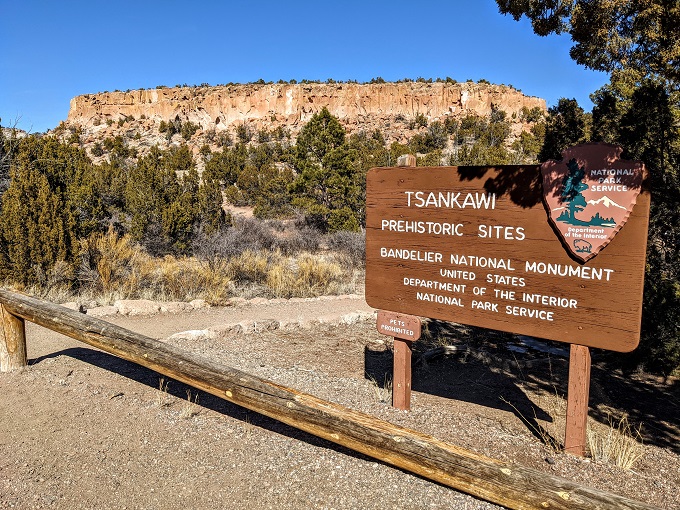
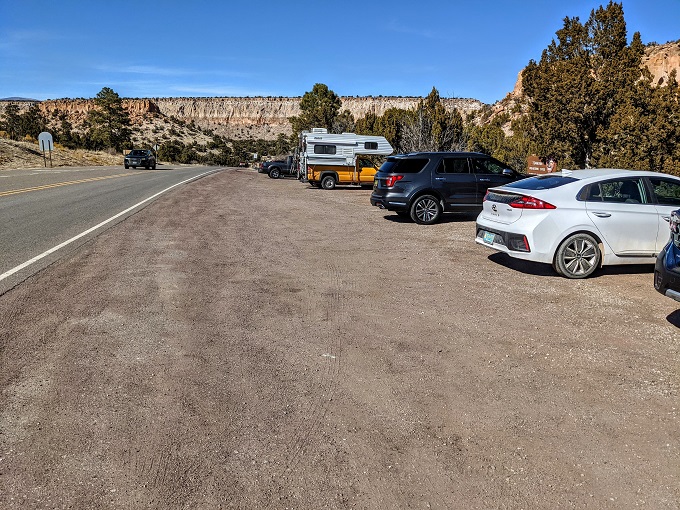
There’s a pay station at the start of the trail. I’d not paid any attention to it at the time because we have a National Parks pass and so don’t have to pay separate entrance fees.

Ignoring it was a mistake because in addition to the pay machine inside, there was a small brown box containing trail guides. It’s worth buying one of those for $1 as it contains more information as to what you’ll be looking at on the way around. We didn’t realize there were trail guides until we neared the end of the trail and saw another visitor reading one, so we bought one when we got back so that we could read up about Tsankawi afterwards.
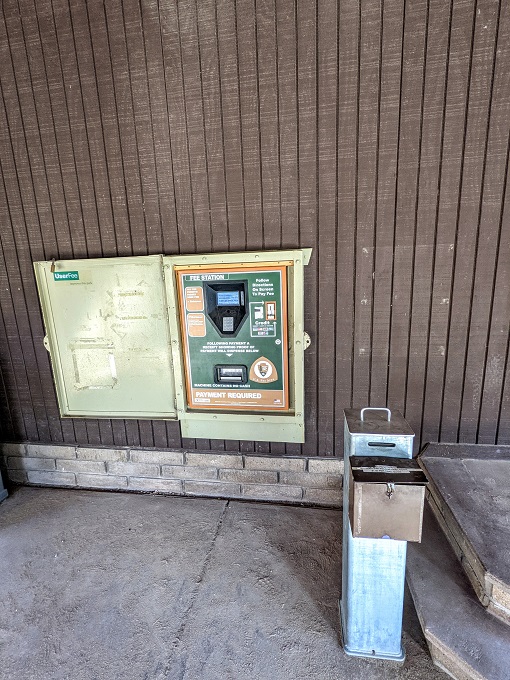
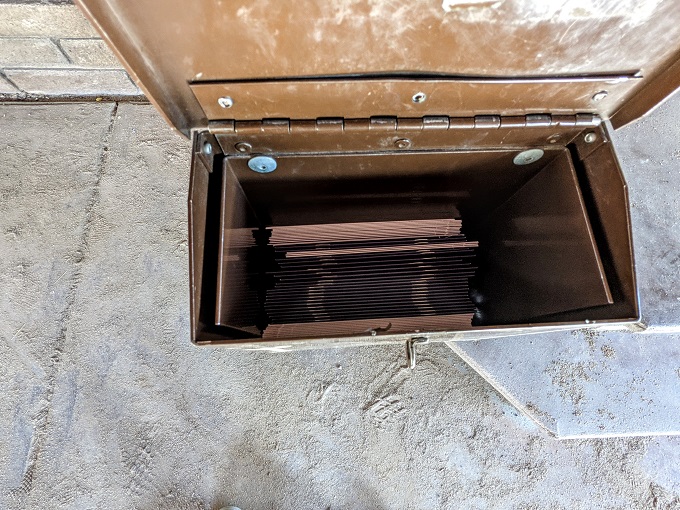
The Tsankawi Trail continues up towards the first of a few ladders you’ll climb up or down on the trail.
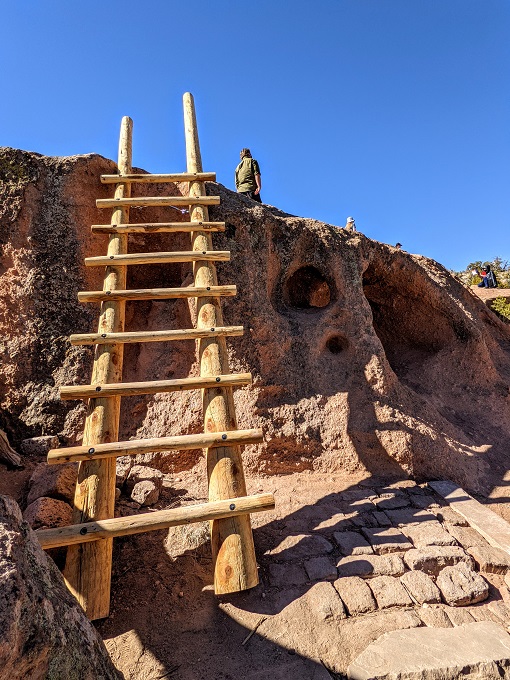
There’s a plateau-like area at the top, with the trail heading up to the right.
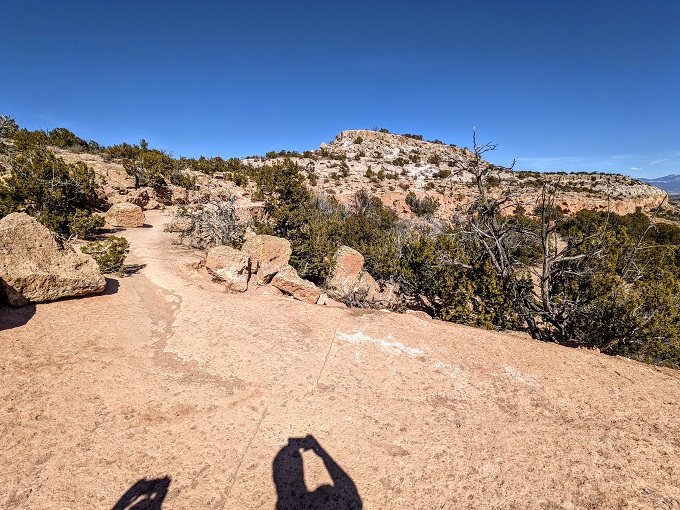
The trail continues up towards the hill you can see in the photo above. There aren’t trail blazes like on some hiking trails, but there are signs along the way which help ensure you continue on the right path.

A million years ago there were several volcanic explosions in the area which resulted in the formation of Valles Caldera. Those explosions covered the Los Alamos area in volcanic ash which became compacted and formed what’s known as tuff.
Even though tuff became stone, it’s softer than normal rock. That’s what enabled the Ancestral Puebloans to build cave dwellings at Bandelier National Monument and Tsankawi; while it still required effort, they were able to dig into the tuff with stone tools.
It’s also what led to the formation of the Tsankawi trail. Walking along the same route wore grooves into the tuff; the trails that the Ancestral Puebloans created going about their day-to-day life are the same trails you can now walk on while exploring the site.
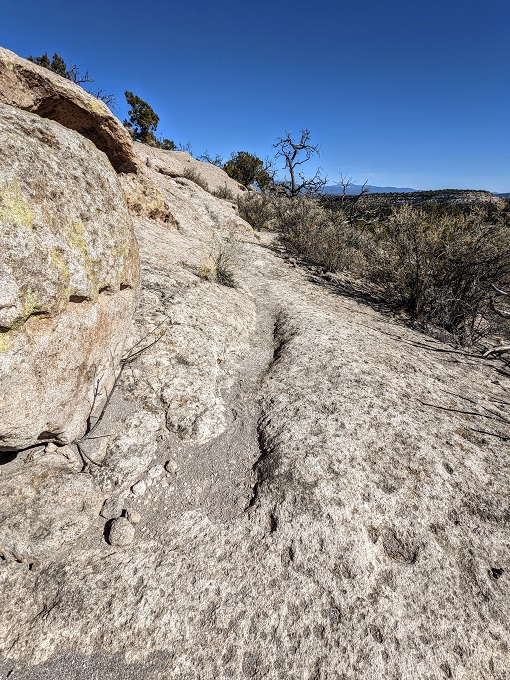
This part of the trail loops around the hill until you reach a ladder to get to the top. The ladder might look a little rickety, but it was perfectly safe climbing up.
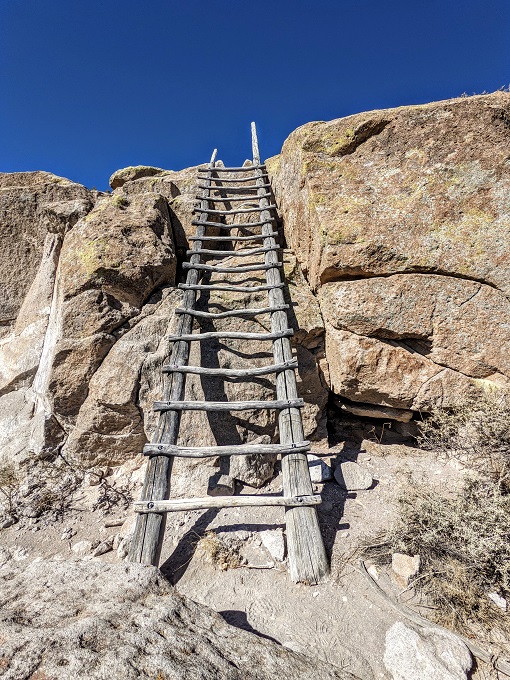
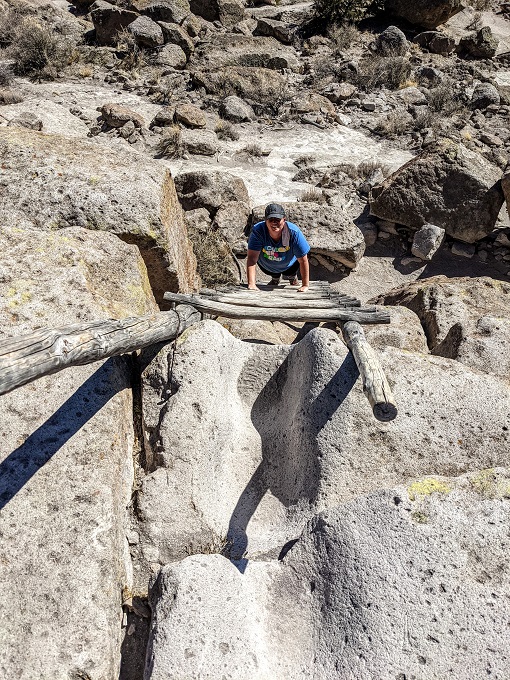
The trail continues off to the right on the top of the mesa, with beautiful views of a nearby mesa and mountains in the distance.

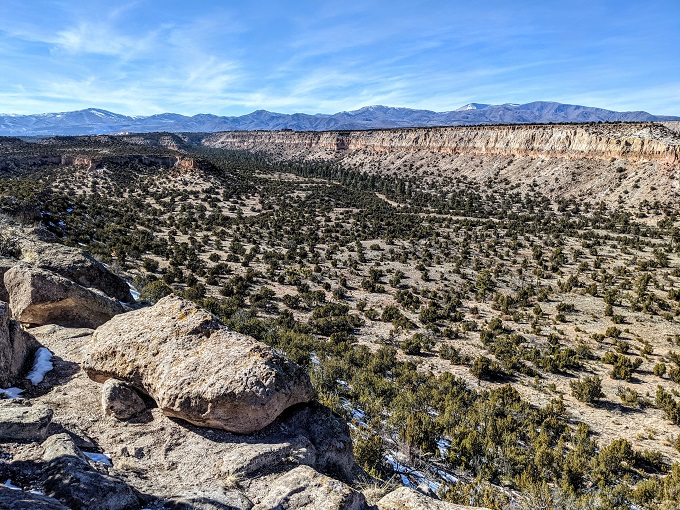
Keep an eye out for numbered signs as they correspond to information in the trail guide I mentioned earlier. The village of Tsankawi once contained more than 250 rooms, most of which have been deliberately left unexcavated so as to honor the wishes of San Ildefonso Pueblo.
Despite not excavating the site, archaeologists have been able to learn more about the Ancestral Puebloans that lived at Tsankawi through other non-obtrusive methods. For example, when standing at the spot numbered 11, you’re standing in what was once the central plaza of Tsankawi.
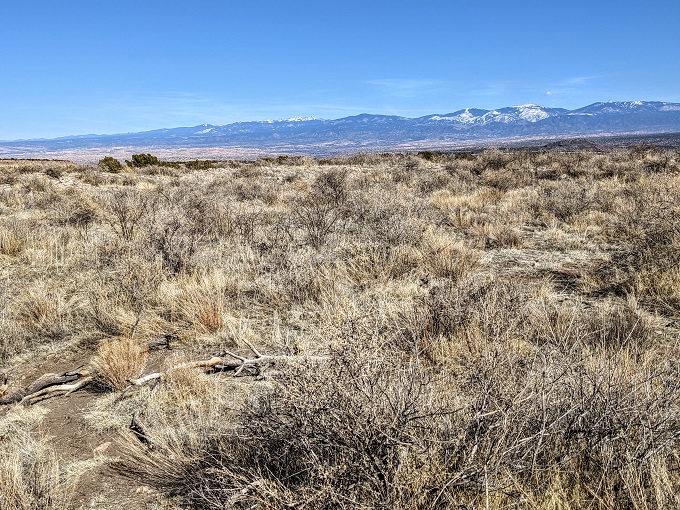
The spot numbered 14 is thought to have once been a reservoir, with water draining in to it from rooftops.
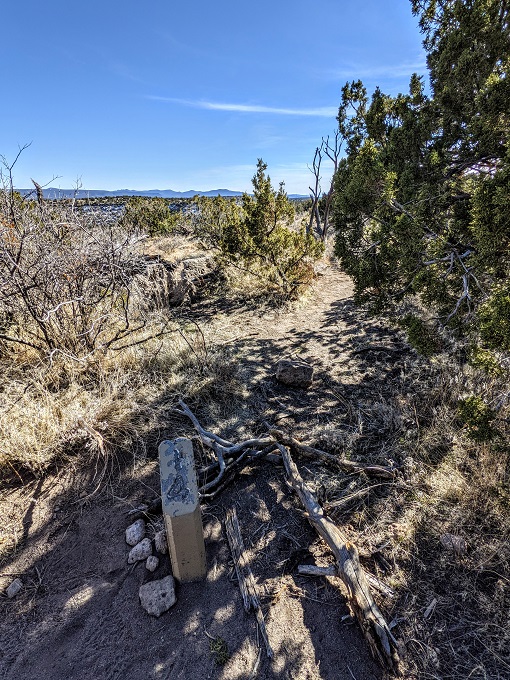
After walking along the mesa-top, the trail continues downwards. There are very deep grooves cut and worn in to the tuff which show where to go, but it gets very narrow down through there.

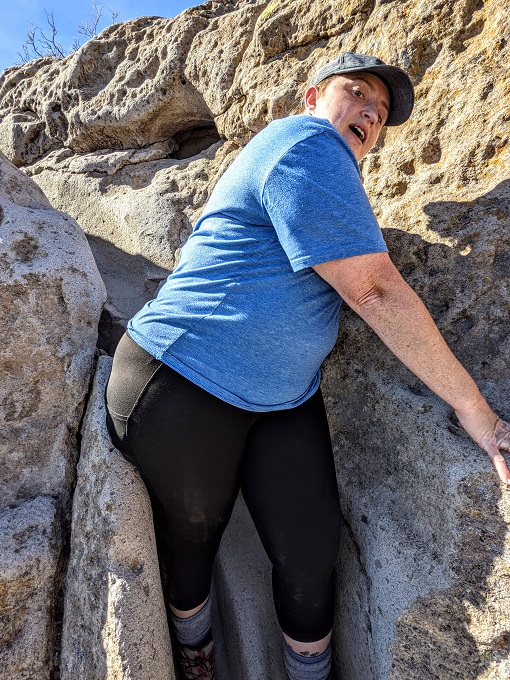
The well-worn trail leads to a ladder you take to continue on the trail below.
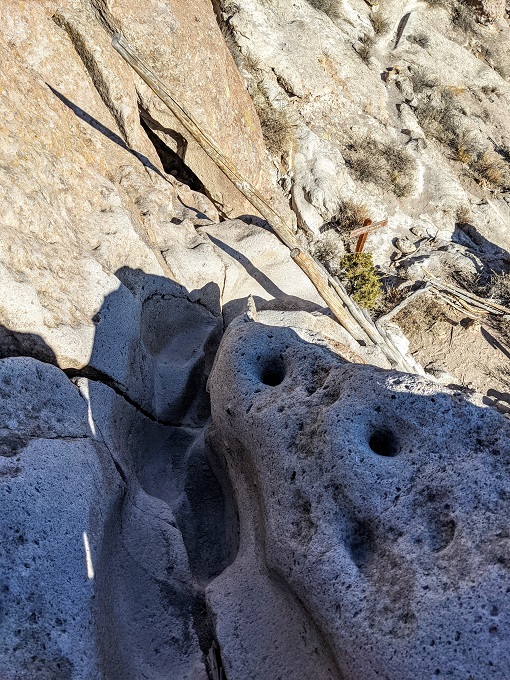
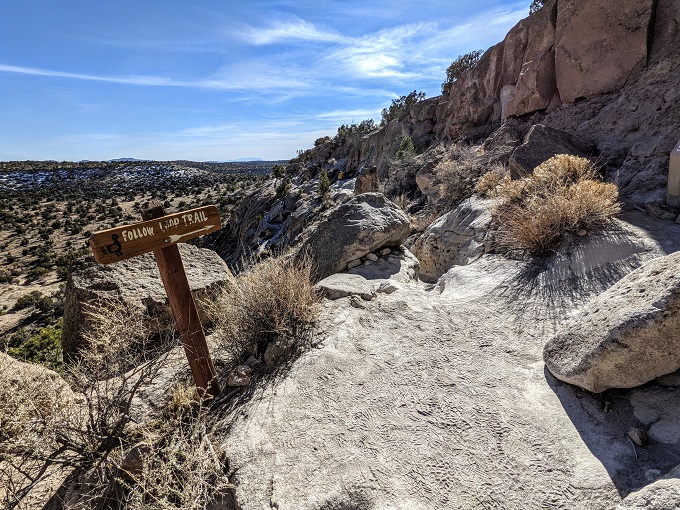
Although the homes on the mesa-top haven’t been excavated, this lower part of the trail has cavates (pronounced cave-eights) which you can explore.
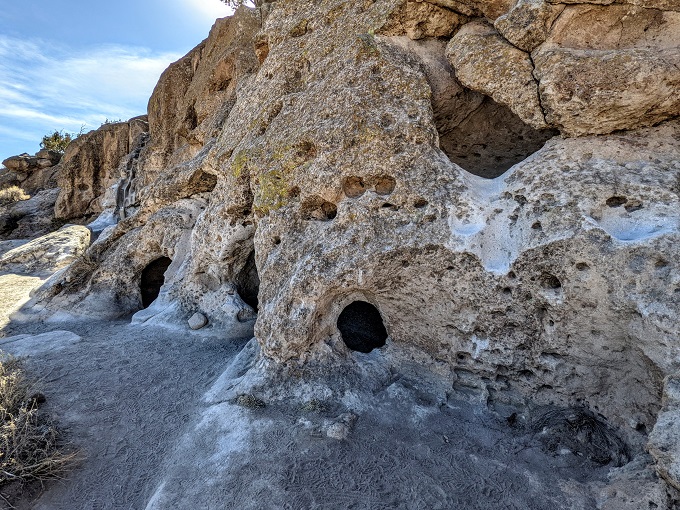
Similar to the main Bandelier sites, these cavates would once have had homes built in front of them. This helped the cavates themselves to stay cooler in the summer and warmer in the winter.
The ceilings in the cavates were smoke-blackened as this helped harden the tuff and make it less likely to crumble.
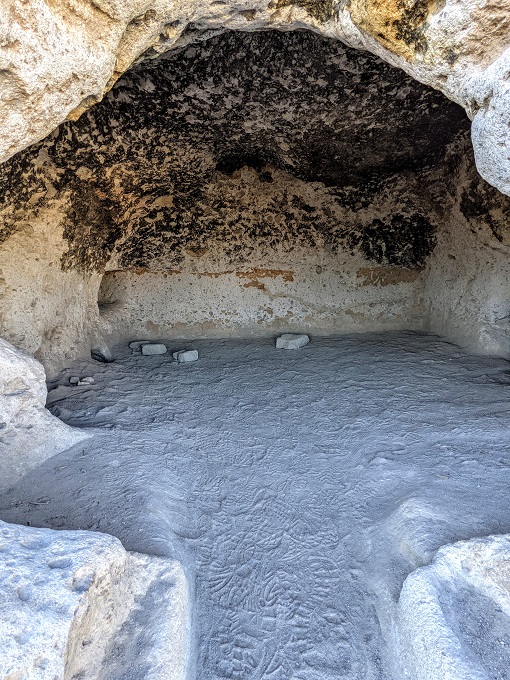
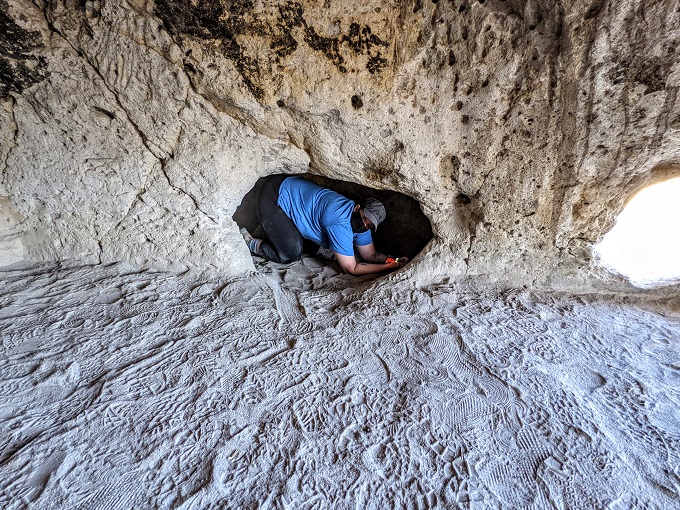
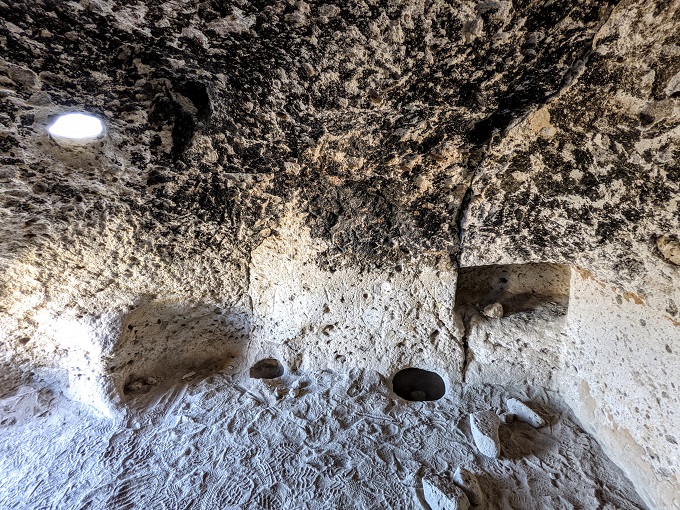
Tsankawi Prehistoric Sites is a particularly interesting place to visit due to all the trails and stairways which were worn and cut in the tuff over time. While the trails were created over time, the stairways were carved into the rock to make it easier for Ancestral Puebloans to climb up and down each day.

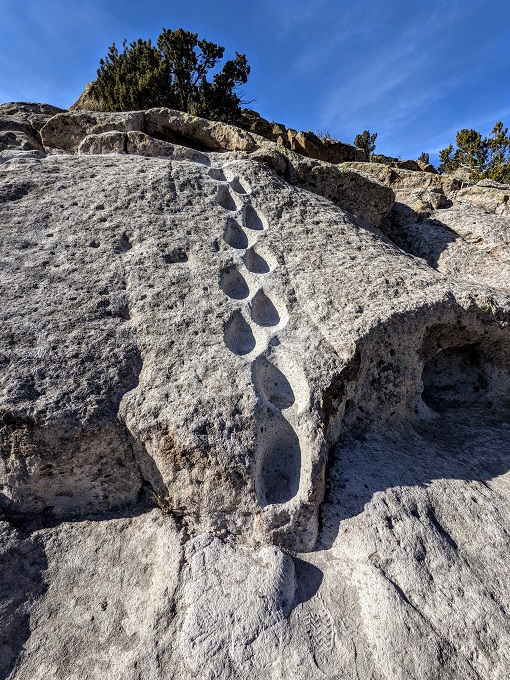
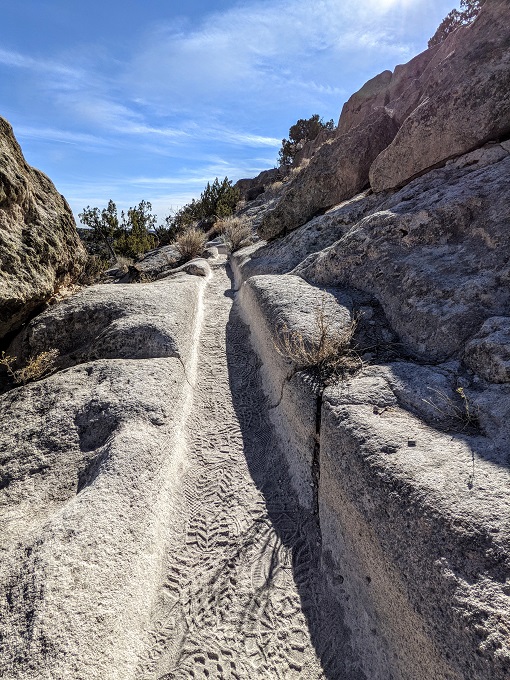
The trail gets a little narrow again at times!
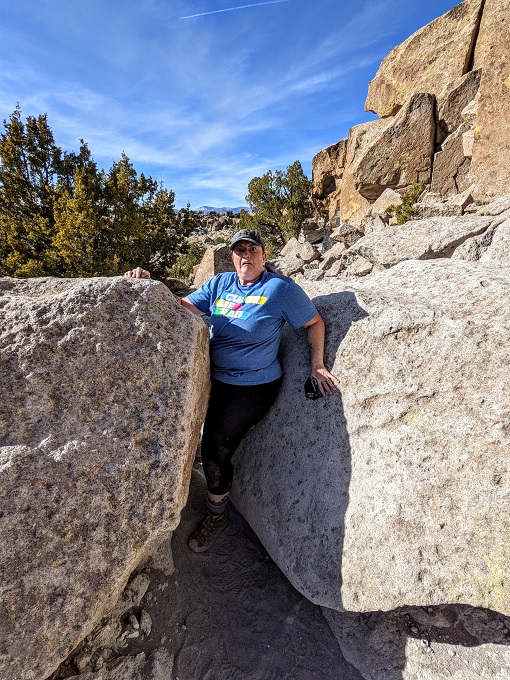
Keep an eye out while walking along as there are petroglyphs along this section of the Tsankawi trail. The trail goes along the side of the lower cliff, so if you’re visiting with small children you’ll want to keep them close as there are no barriers or handrails.
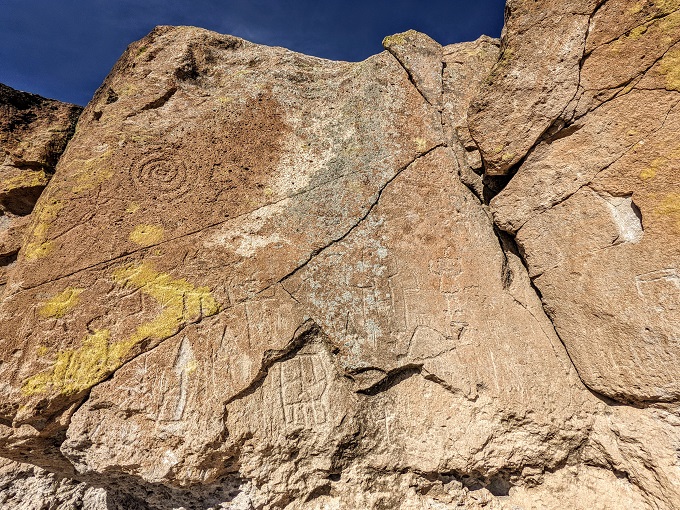
Final Thoughts
With cavates, petroglyphs, trails worn in volcanic rock, beautiful views and more, Tsankawi Prehistoric Sites in Los Alamos is well worth visiting in addition to Bandelier National Monument of which it’s part.
The 1.5 mile loop trail is pretty easy to do, although it gets a little narrow at times and requires climbing up and down a few ladders, so that’s something to be aware of if you have limited mobility.
Leave a Reply